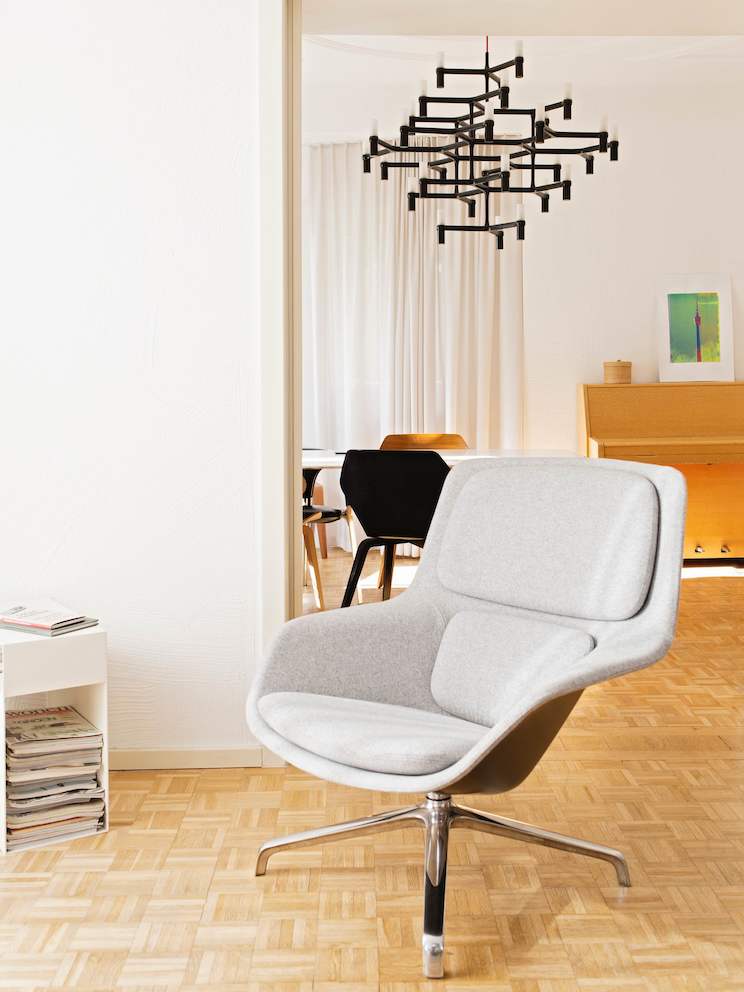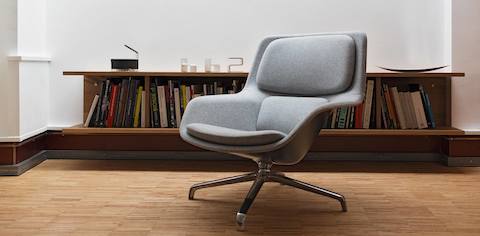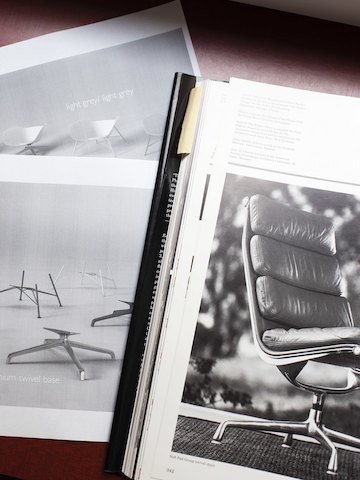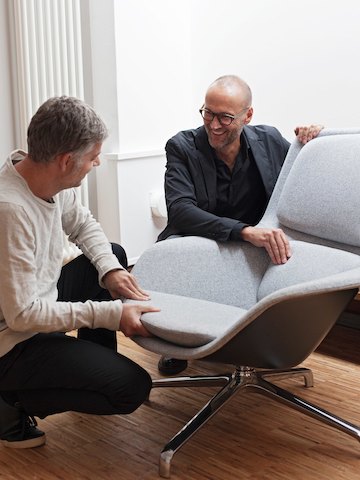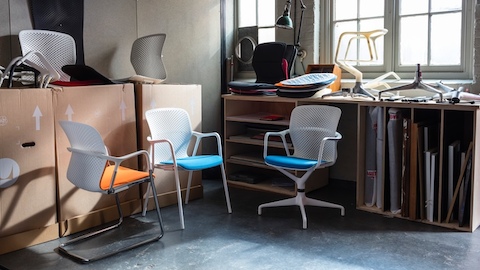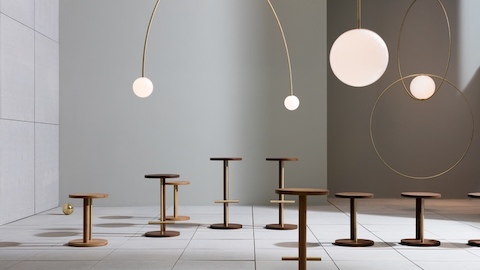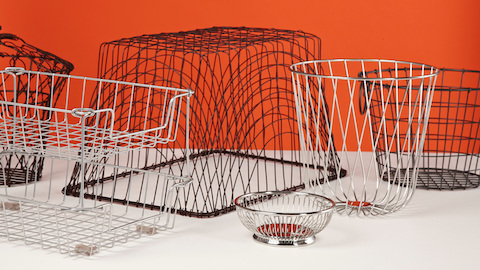“Our hearts belong to furniture,” says Markus Jehs, who along with Jürgen Laub comprises Stuttgart-based design studio Jehs + Laub. Since founding the studio in 1994 following their studies in industrial design at the Schwabisch Gmund University, the duo has pursued furniture projects. “When we were young we went to Italy to work with the famous Italian furniture companies,” says Jehs. “It wasn’t easy in the beginning, but we tried hard and long and one day we had a breakthrough.” Influenced by the now numerous relationships they’ve established with clients around the world, the two describe their approach as a European one.
“It was always very interesting for us to work with different companies from different countries, with different cultures,” says Jehs. “It was important for our development as designers to ascertain a feeling for what is important to the American market, the German market, and so on. And we are always curious to work with companies with strong personalities, histories, and DNA.”
With an appreciation for Herman Miller’s roots and a strong connection with the company’s DNA (“We feel very close to them in terms of thinking about design,” notes Jehs), the studio was exceptionally pleased when the opportunity came to work on a new lounge chair.
Inspired by the structure and materiality of a ski boot, the Striad Lounge Chair is one of the latest entries into the Herman Miller Collection. We sat down with Jehs and Laub to discuss the chair in detail.
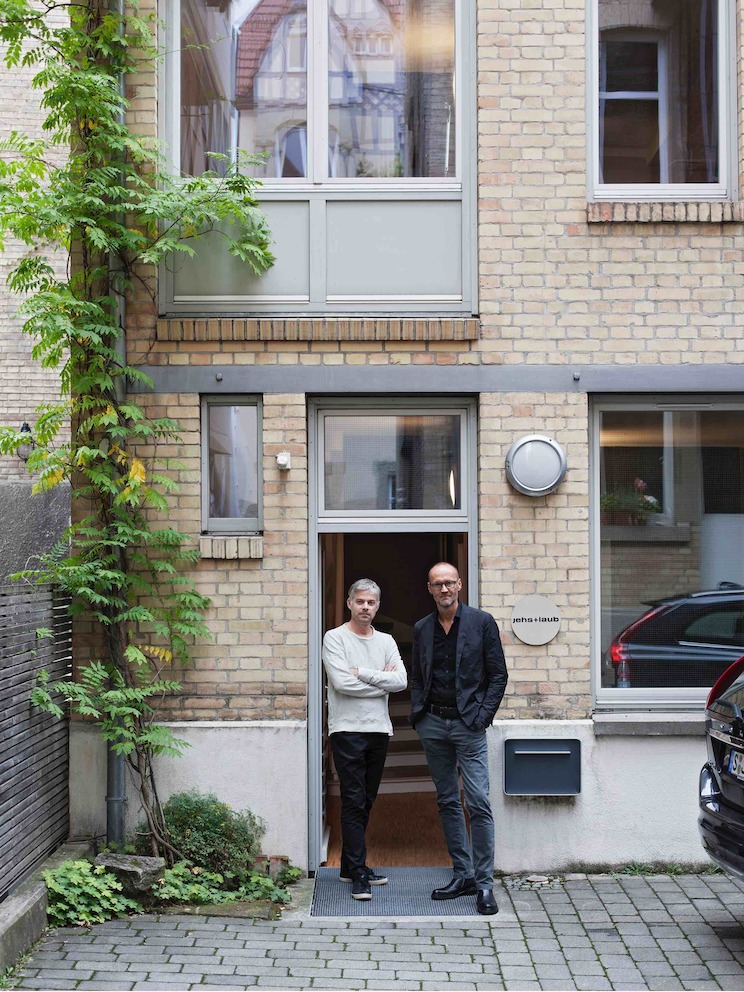
How did this collaboration come about with Herman Miller?
Jürgen Laub: Our design is functional and it’s important that it’s also aesthetic. In the past, Charles and Ray Eames combined these in the best way. So it was really nice when Herman Miller approached us with a brief for a new lounge chair.
Markus Jehs: The DNA of all Herman Miller products is similar. They start very industrial—from the base—then become very human, very comfortable, very soft, so you have both elements in one product, the industrial and the handcrafted.
If you look at the Eames Soft Pad Chair you can see exactly what we mean. The aluminum part is industrial and the leather cushions are craft. This was the leading image we had in mind when we started thinking about this project.
Tell us about the brief.
JL: It discussed how soft seating has become more important than in the past, because people work on their laptops and mobile devices wherever they are. If you go to a hotel today, for example, you see many people sitting around in the lobby working and playing on their devices in lounge chairs. We work and live in lounge chairs. At airports, furniture fairs, and in our homes. At Herman Miller’s Design Yard, if you look at all the spaces in between the meeting spaces, in between the Plaza and workpoints, you have spaces to wait, private space to work alone, to have small informal meetings in the lounge areas. This changed in the last 15 years, but maybe because all the other furniture changed. For example people work together today on one table. So what you need on the other side? If you want to make a phone call, if you want a little more privacy, you need other spaces for that, and that could be lounge areas. Lounge chairs help to create spaces within spaces.
MJ: George Nelson said something to the effect that the ideal office is a daytime living room. So this is the appeal the product should have. It’s not only a working tool. It’s also furniture you would want to have in your house—like the Eames Lounge Chair. We decided the Eames Lounge Chair was a masculine piece of furniture, and maybe what we need to design is the female companion for it. Then, we have a couple—and they won't compete with each other on the market.
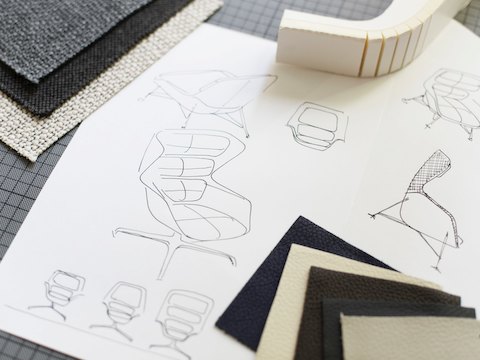
How did you start the process and where did it lead you?
JL: As we started with the first sketches and 3D renderings, we thought about the market: What does it really need? Within the lounge category, we saw an opportunity for low chairs, high chairs, and cocooning chairs. We had the feeling with the first sketches that it looked a bit like a ski boot. With ski boots you have a hard plastic shell that makes it stable to mount to a snowboard or skis, and then you have a soft shell that is a little bit more flexible, and then you have a really comfortable part that is foam and covered with material. And we thought this was a nice idea, so we have really rigid parts and really soft, flexible parts. We have different layers.
What was the timeline of the project from this point?
MJ: Eight weeks after we received the brief, we presented renderings at the Herman Miller Design Yard. This was in January of 2015. These sketches showed the idea of the layered shells—hard and soft, with different cuts and pillows. These renderings were without bases as they were not important to us in this period of exploring ideas. After we got the thumbs up to proceed, in our studio we created three full-scale models corresponding to the three sizes of the chair.
Everybody liked the idea of having these three versions. The concept was approved when we presented our prototypes that June. All the models had been built in Europe with our suppliers up to that point. Then, Herman Miller started the product development. They built prototypes and invited their suppliers to work with them on all the different elements.
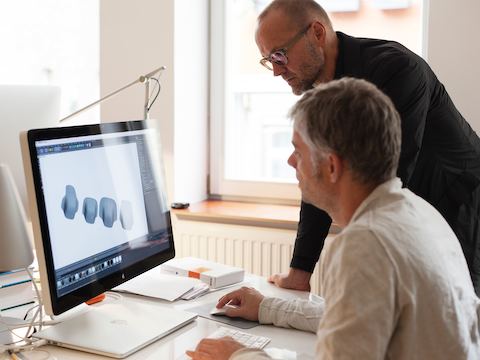
Tell us about this prototyping stage?
JL: Our goal was to create a chair that is both comfortable and still maintains the crisp tailoring we wished to achieve. Herman Miller met this challenge. For example, we were trying to create a pillow that was soft enough, but held its shape. Herman Miller introduced us to a molded foam and came up with the idea to split the densities. So the backside is harder, which allows the form to keep its shape, while the front side is softer and feels very comfortable. The way the cushions are very soft and friendly makes the chair a little bit more residential.
MJ: We also created the bases at this point. We started with a three-leg base because it’s more minimalistic, but it wasn’t stable enough, so we decided we needed four legs, but we kept them very reduced. Along with this fixed base, we also needed a swivel base. This is very important for the contract market because when you have meetings in a small conference area around a table you need to be able to move yourself to the other people in the space or to a monitor, when you are having a videoconference with someone. So we have these two different functions for the base.
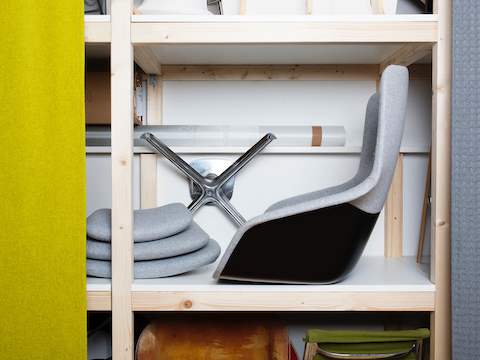
What were the challenges of the project?
MJ: We questioned how to do the soft shell. Is it an industrial process? For example, if you look at sneakers, they also have elements like this, so we had that in mind a little. But we also didn’t want it to require a lot of handwork because this is always expensive.
Herman Miller explored a very nice technology used in cars as well as aircraft. It is an environmentally friendly material that can be heated up and pressed into shape. When it cools, it becomes very rigid. It has a specific flexibility, yet it’s also very strong. So the shell is flexible, yet it holds up.
You used this same material to create a fixture for the soft pillows, right?
JL: Yes. We invented a fixture to attach the soft pad to the shell, which keeps it in form. Inside is something really hard and you can clip it in. It is easy to mount. You don’t see anything because there is no clip or screw. So it’s like a little window in the flexible shell and then you fix it in.
The development was very quick. And you visited the production facility only twice. Was this unusual?
MJ: I would say if you have a project with this complexity it is unusual. Typically the development process takes two or three years and usually you visit maybe four or five times. We began to get the impression that the people at Herman Miller could read our minds. When we had an idea and started to explain it, they said, yes, we know what you mean. In the end, we said it’s all perfectly translated from our thoughts into reality.
What were the most satisfying moments of the project?
MJ: If you look at the product it has something visual, it promises something. If you sit in the product it should fulfill what you think when you look at it—this is an idea that we share with Bill Stumpf. And in this case, it’s even better. So I would say it’s the most comfortable lounge chair we have designed so far. It’s always a learning process. Each product we do, the next one should be better because we enlarge our experience. This is something very important for us, that we become better and better.
And does the finished product have the feminine character you had hoped for?
JL: To design something in contrast to the Eames Lounge Chair, it is necessary to understand how it behaves. It looks masculine, because it has a hard shell with a soft inside. It looks powerful and protected, and functions that way, like a knight in armor. And it looks best alone—the perfect status symbol.
We think a lounge chair that will be grouped with others should look more friendly, more inviting. To achieve that, our vision was to create softness in different forms with several layers of densities. In the end, Striad is a unisex chair.
